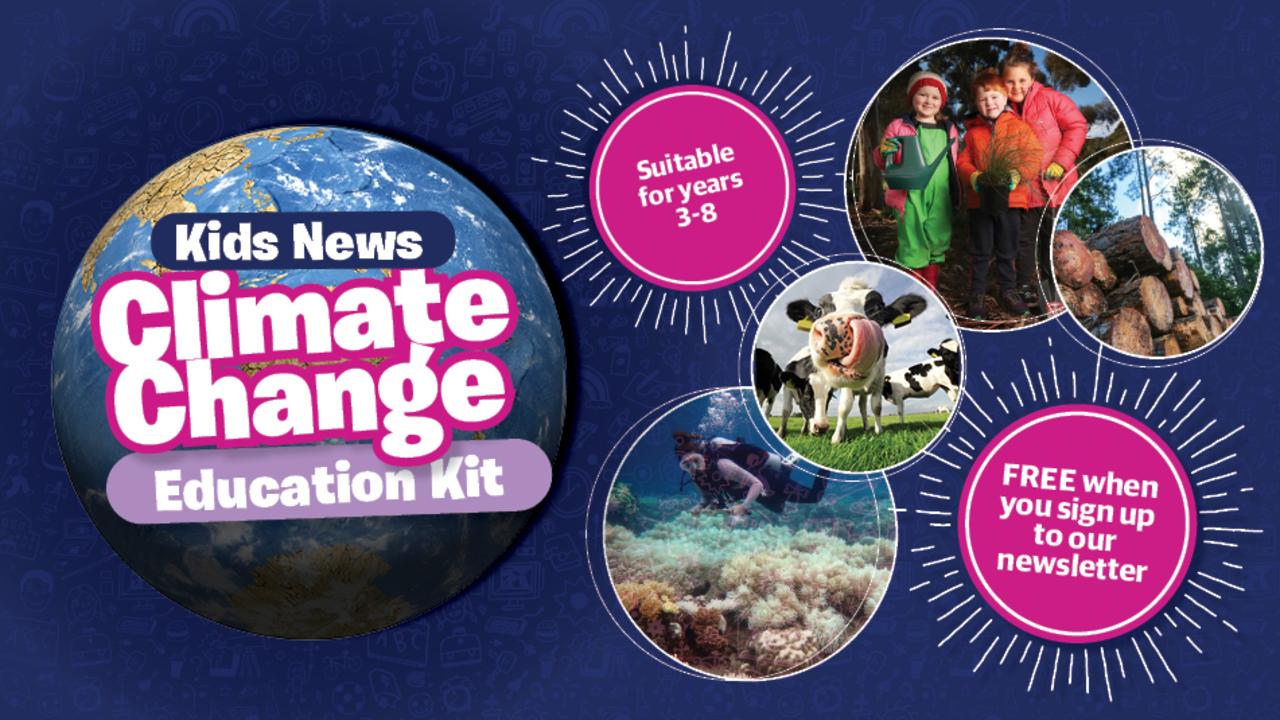Climate change Part 9: When nature plays a part
PART 9: Did you know that Earth has experienced at least five major ice ages? Climate change isn’t only caused by humans, it occurs naturally too. Let’s look at some of the natural causes

READING LEVEL: GREEN
Climate change isn’t only caused by humans. It also occurs naturally.
The Earth has gone through many extreme cycles of temperature changes – from freezing cold to tropical – over billions of years.
You would know about the ice age, of course, when large parts of Earth was frozen over. But did you know there hasn’t been just one ice age – there have been at least five major ice ages, typically lasting millions of years?
In one ice age, believed to be the most extreme of the past 1000 million years, it’s thought the whole planet was nearly entirely frozen, and there was even sea ice near the equator!
One of the causes of ice ages is believed to be changes in carbon dioxide* levels in the atmosphere. Another is believed to be changes to the Earth’s tilt and orbit around the sun, which affects the areas that receive sunlight.

The Earth hasn’t only been very cold, though. It has also been toasty warm in places we would consider strange!
About 55 million years ago, the Arctic is thought to have had palm trees and crocodiles. That was when Earth had an extensive period of natural global warming. Ninety million years ago, Antarctica had rainforests for the same reason.
These climatic changes happened very, very slowly, over millions of years. Scientists say the climate change that we are experiencing now has happened super quickly – and been particularly rapid in recent decades – and is not due to natural forces. It’s due to the actions of humans.

The main problem is we are burning fossil fuels*, like coal, oil and gas, which release harmful greenhouse gases* into the atmosphere and cause the planet to warm up.
While natural forces are not a major player in our current climate crisis, you could say they certainly keep life interesting. Below, we look at two natural forces that affect our weather.
Volcanic eruptions
When a volcano erupts, it blasts dust and ash into the air, which can travel around the world, blocking out sunlight. This causes temperatures to cool. The cooling is only temporary, though – the ash tends to fall to the ground within a few months.
What has a much longer impact are floating particles called sulphur aerosols*.
These aerosols, also created by eruptions, reflect sunlight away from the Earth and can stay in the atmosphere for more than a year, also lowering temperatures.
One of the world’s most famous volcanic eruptions was Krakatoa, in Indonesia, in 1883.
It was so huge, temperatures fell by an average 1.2C in the year after, and the ocean cooled for decades, helping to offset man-made climate change.
When Mount Pinatubo, in the Philippines, erupted in 1991, it was one of the biggest eruptions of the 20th century. Global temperatures dropped about 0.5C for a couple of years.

Short-term climate patterns
Perhaps you’ve heard of El Nino and La Nina. These are short-term climate patterns in the Pacific Ocean that affect rainfall and temperatures around the world.
They can cause dramatic weather events, such as hurricanes, severe storms, drought, bushfires and snow.
They occur irregularly every two to seven years and usually last about nine to 12 months – sometimes, though, they last for years.

GLOSSARY
- carbon dioxide: the main greenhouse gas in the atmosphere. Greenhouse gases are causing Earth to warm
- fossil fuels: fuels that are formed underground from plant and animal remains millions of years ago and are dug up and turned into energy when burnt
- greenhouse gases: gases in the Earth’s atmosphere that trap heat. They include carbon dioxide and methane
- aerosols: particles that are carried in the air by a gas
EXTRA READING
Meet the greenhouse gas makers
How to tackle the climate challenge
QUICK QUIZ
- How many major ice ages has Earth experienced?
- What could be found in the Arctic about 55 million years ago?
- Why does a volcanic eruption cause temperatures to cool?
- How much did the temperature fall because of the eruption of the volcano at Krakatoa in 1883?
- What are the names of the two short-term climate patterns in the Pacific Ocean that affect rainfall and temperatures around the world?
LISTEN TO THIS STORY
CLASSROOM ACTIVITIES
Refer to the accompanying Climate Change Education Kit classroom workbook with 20 activities. It’s FREE when teachers subscribe to the Kids News newsletter.

